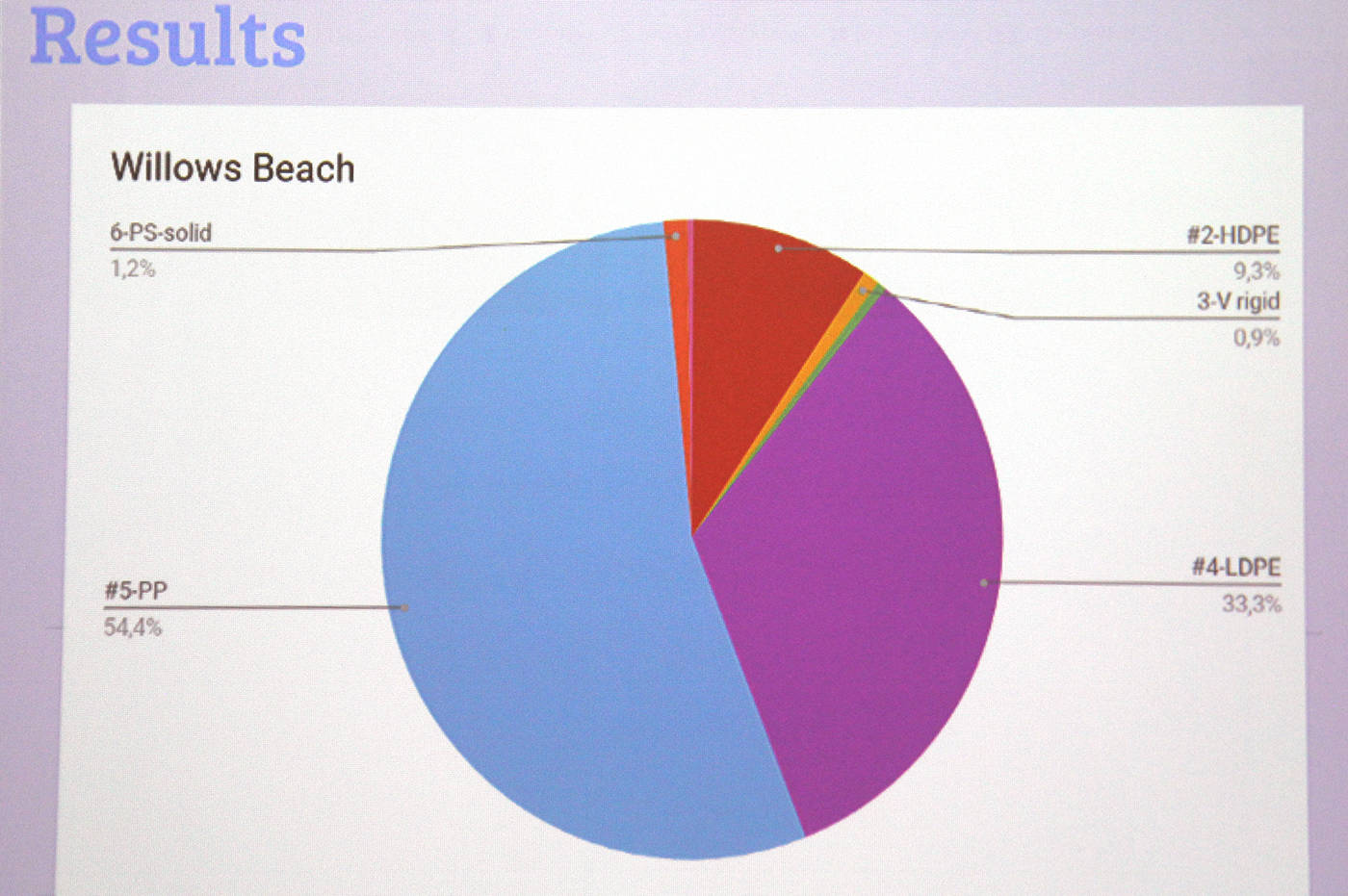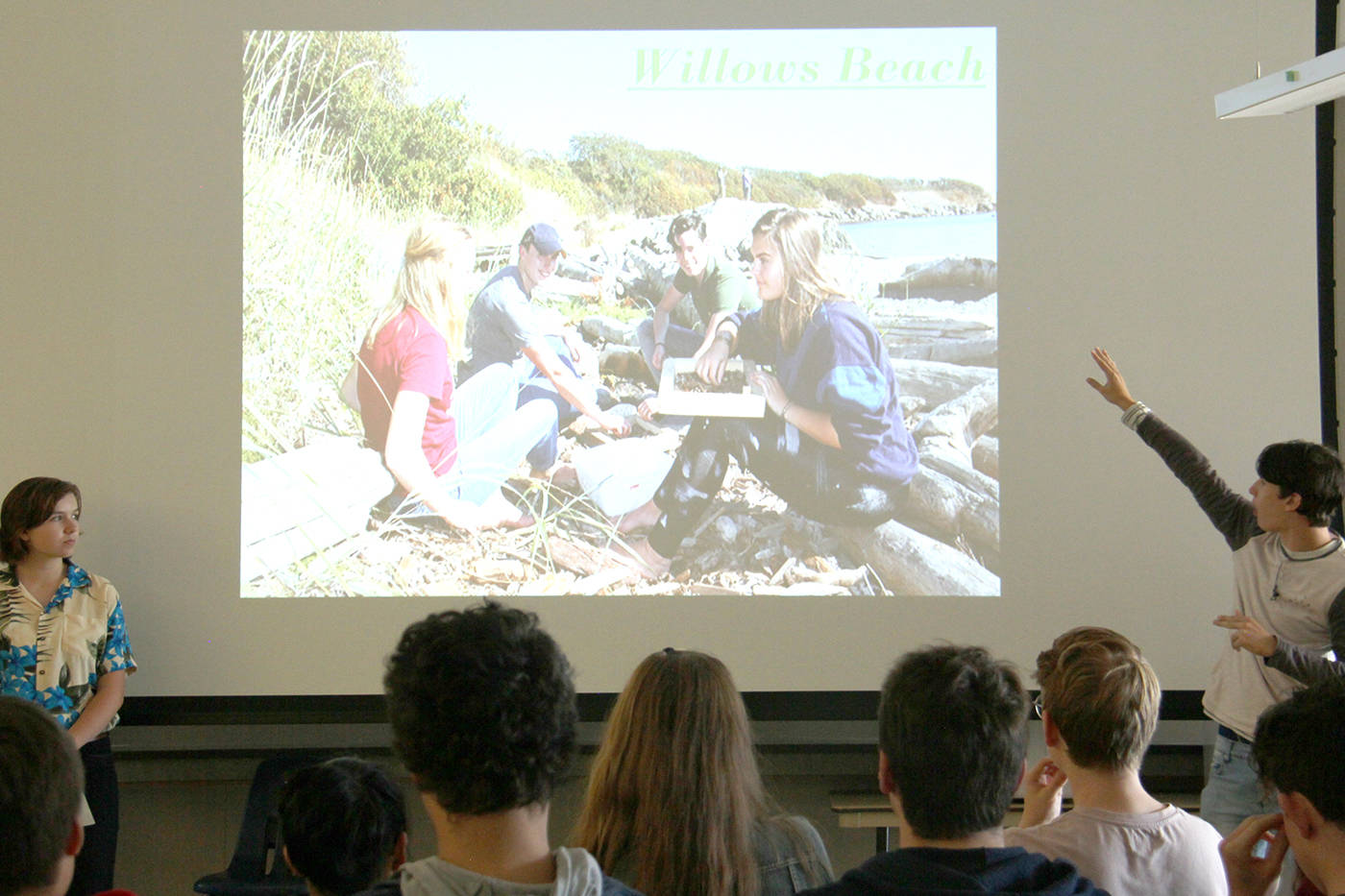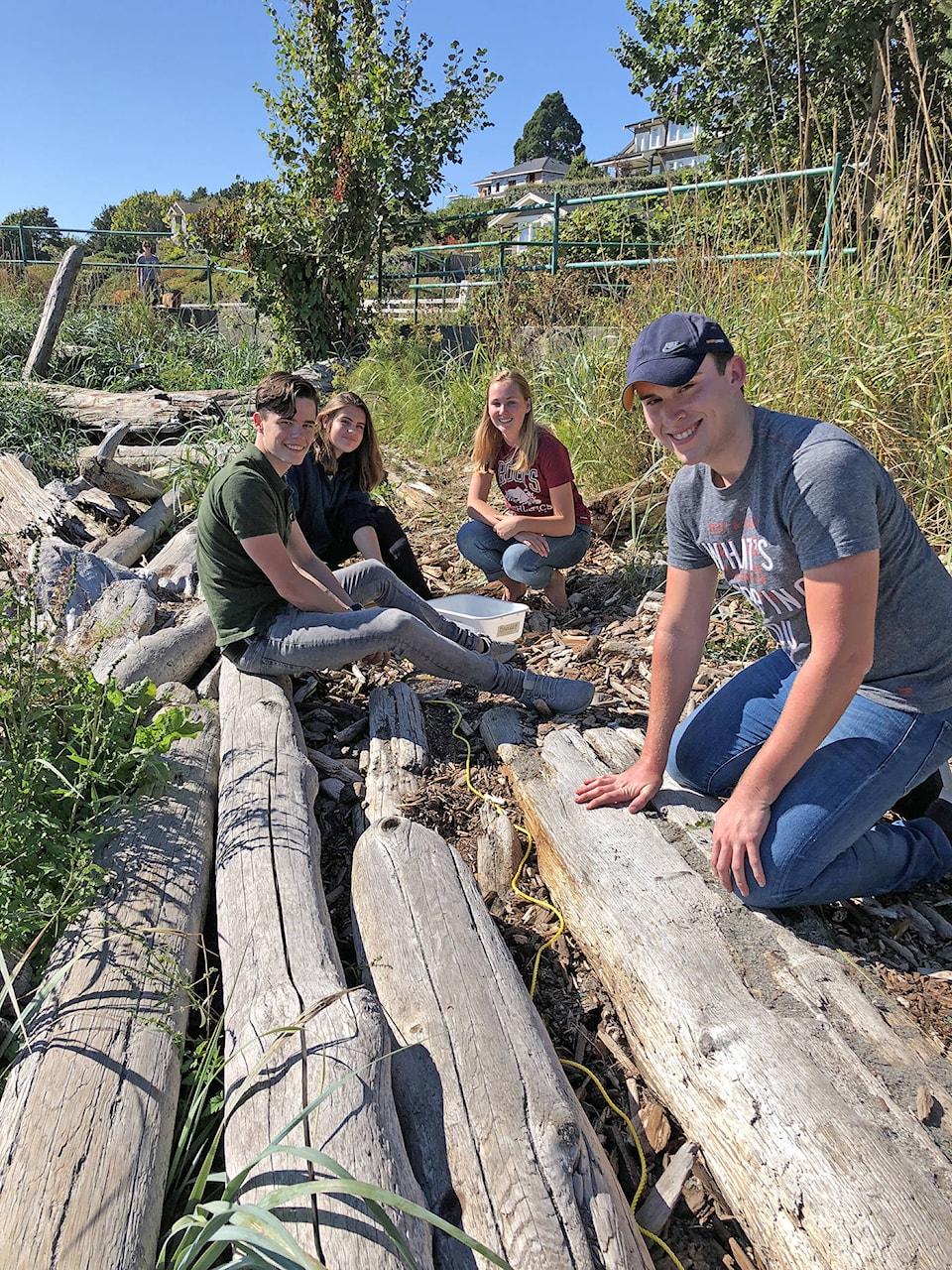All types of plastic make an appearance on local shorelines, says a study by Oak Bay High students working alongside their peers from the Netherlands.
The study is part of ongoing work, both in class and as extracurricular activity, to study water in the community. This year, students embarked on a mission to determine which what types of plastics are washing ashore and if they’re recyclable.
During a presentation for a small crowd of parents, teachers, school officials, Oak Bay Mayor Nils Jensen and other interested residents, students outlined the methods used for gathering information on plastic pollutants plucked from area beaches.
“Plastics have so many terrible effects on the environment and they could so easily be prevented by just thinking about where plastic is going, not throwing it away or just leaving it on the ground where you are,” said student Astrid Hawkes, explaining the bioaccumulation of plastics in the food chain. Small marine life start eating the tiny bits of plastic, working up the food chain to human impact. They also documented impacts on animals, for example showing a bird with plastic filling its digestive system, killing it.
The students from both Oak Bay and Maurick analyzed levels of plastics at Oak Bay’s Willows Beach, Cadboro Bay and French Beach in Sooke. They broke down plastics found at the local beaches by type.
The two major types of plastic found at Cadboro Bay and Willows beaches were #4-LDPE, (low density polyethylene) and #5-PP.
And there was a lot of it, as discovered last year, during a similar project. Then students found Cadboro Bay held the highest level of plastic pollutants with 53.4 per cent of the weight, Willows beach had 20.2 per cent, Mystic Beach at 21.2 per cent and French Beach a 4.7 per cent.
This year, they discovered #5-PP as the top offiender. Used for items such as yogurt containers and bottles, it’s an easily recyclable plastic and part of most community recycling programs. It can be recycled into bicycle racks, brooms, bins and more, but was abundant on both beaches.
The second most found was #4 LDPE, which is technically recyclable, but not often accepted at community recycle programs, students found. When recycled, it becomes milk cartons or grocery bags.
The students also outlined their four-student visit to the Netherlands last school year, where they engaged in a project with Maurick College, studying the the salt marshes and mud banks of a nature reserve where the town of Saeftnghe once sat.
Students from Oak Bay and Maurick previously collaborated on a Bowker Creek water study, taking that information to share during the Water is Life Conference last year in the Netherlands.
@OakBayNews
cvanreeuwyk@oakbaynews.com
Like us on Facebook and follow us on Twitter.





